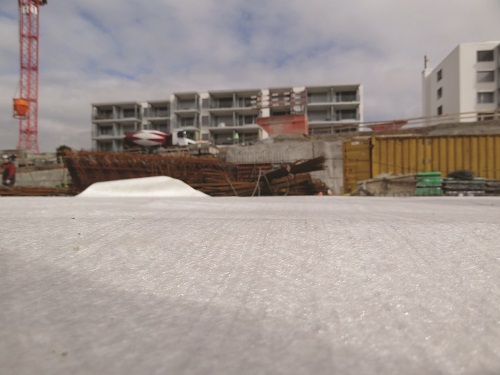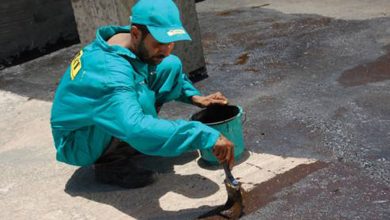Below Ground Waterproofing – Solutions from Mapei
Santhosh M Prakash, Vice President (Product Management), Mapei Construction Products (India) Pvt. Ltd.

Why Waterproof: From a theoretical point of view, good concrete has a very low coefficient of permeability k, so it may be considered more or less impermeable to water under pressure. UNI 9858: 1991 (replaced by EN 206-1: 2001) established that for a concrete to be considered impermeable, its water/cement ratio must be < 0.55. In real conditions, in spite of the most modern production techniques being employed, it is extremely difficult to make concrete which is perfect throughout its entire bulk. In fact, even the smallest imperfection (cracks, honey combs, etc.) and construction and structural joints form a preferential passage for water. There are various phenomena which generate cracks in concrete, such as shrinkage during curing, seismic activity, settling of foundations and vibrations caused by traffic. It is obviously impossible to keep all these phenomena under control and be certain that there are no cracks in the concrete after it has been poured.
Considering the above, the only solution to adopt to stop water penetrating into the concrete and infiltrating into the rooms below ground level, is to use a waterproofing system. When a waterproofing system needs to be installed, the highest point of the groundwater must be considered, whether the level is constant or influenced by temporary events and by the type of ground. In fact, the characteristic of ground with good drainage, comprising mainly sand and gravel, is that it releases the water very quickly, but transfers large amounts of water just as quickly around the structure, thus generating high pressure. With compact, impermeable ground on the other hand, such as clayey ground, the water is released very slowly with the risk of water collecting and generating infiltrations in rooms below ground level.
Solutions from Mapei:
There are many types of waterproofing solutions for below ground level waterproofing like:
- Bentonite Clay Waterproofing Membranes
- Self-Adhering Sheet Waterproofing Membranes
- Prefabricated Drainage Composites
- Below-Grade Waterproofing Accessories
- Surface-Preparation Products
Mapei recently launched Mapeproof FBT – a fully bonded synthetic waterproofing membrane with non-woven fabric backing used in combination with tapes of Mapeproof FBT Tape and Mapeproof SA Tape for waterproofing structures below ground level before casting concrete.
Uses of Mapeproof FBT
Mapeproof FBT is used for waterproofing horizontal and vertical surfaces of underground structures before pouring concrete such as:
- Carparks and garages
- Underground areas in general
- Swimming pools, basins and storage tanks
- Underpasses
Mapeproof FBT may also be applied underneath foundation slabs against diaphragms, pile walls, sheet piling and other retaining structures for excavation work.
Advantage of Mapeproof FBT
- Mapepeoof FBT is made up of a synthetic membrane, laminated with non-woven polypropylene fabric which, once concrete has been poured, forms a monolithic bond with the concrete and remains perfectly bonded over time.
- Mapeproof FBT is a waterproofing system that becomes fully bonded to poured concrete and prevents water from migrating laterally between the foundation structure and the membrane
- Completely watertight overlaps
- Mapeproof FBT is cold-applied and no heat and/or naked flamed are required. It is positioned before placing the steel reinforcement and pouring the concrete and does not require a protective layer.
Conclusion: Waterproofing is a system, not a product. As such, when designing and installing a waterproofing system for a structure, one must consider the performance and quality of the primary waterproofing membrane as well as of the accessory products that support it. Often, these attributes affect the most critical areas, such as penetrations, terminations and transitions. MAPEI draws on its history of 80+ years of producing concrete system accessories that are not only installer-friendly, thus increasing the likelihood for a successful installation, but that will also stand up to the test of time.



